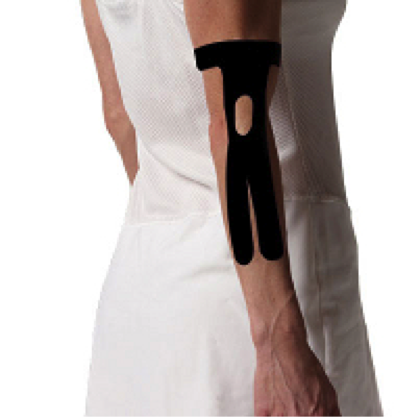The Truth about Tennis Elbow.
Tennis elbow, or lateral elbow epicondylitis, is a common condition we see and treat at Fleurieu Physiotherapy & Wellness. Tennis elbow is characterized by pain over the outside of the elbow, where your forearm muscles meet your elbow.
What causes Tennis Elbow?
Tennis elbow is a repetitive stress injury caused by overuse and is related to the muscles and tendons in the forearm. The wrist extensor muscles form a tendon that attaches to the bone on the outside of the elbow. Over time small micro tears occur in the tendon that anchors the wrist extensor muscles to the elbow. These micro tears usually result from repetitive extension movement at the wrist. These mirco tears can trigger an inflammatory cycle in the elbow, leading to pain and dysfunction. Repetitive activities that can cause these micro tears include sewing, painting, excessive typing and physical sports like tennis and squash. Interestingly, less than 50% of tennis elbow cases are caused by playing Tennis! Other common causes of tennis elbow include:
Unaccustomed excessive hand use i.e. packing boxes when moving house, painting a fence.
Poor forearm muscle strength and/or tight forearm muscles
Poor sporting technique
Excessive gripping or wringing activities.
Tennis elbow can either be acute or chronic. Acute Tennis Elbow usually happens after an unaccustomed activity (like those above) where more force is applied to the forearm / elbow region than the normal healthy tissues can handle. Chronic tennis elbow is associated with degenerative changes in the muscle tissues where the tendon attaches to the elbow. In chronic tennis elbow the unhealthy tissues cannot deal with the same amount of load and repetition that normal healthy tissues can. Chronic tennis elbow is diagnosed as having lasted longer than 3 months.
Signs and symptoms of tennis elbow
Common symptoms of tennis elbow include
Deep ache on the outside of the elbow
Intermittent sharp pain with gripping activities
Weakness in the affected arm i.e. with grip strength testing
Heat or swelling over the outside of the elbow
Trigger points and tenderness through the wrist extensor muscles
Tenderness with palpation to neck joints
Neural tension in the affected arm
Altered elbow biomechanics
Impaired arm function
Treatment of tennis elbow
Physiotherapy has been shown to be an effective treatment in the management of tennis elbow.
The goals of physiotherapy in the treatment of tennis elbow are:
Reduce elbow pain
Encourage tissue repair
Restore normal joint range of motion
Restore normal muscle length and strength
Restore normal upper limb neurodynamics
Normalise neck joint function
At Goolwa Physio your physiotherapist will undertake a thorough initial assessment that will help guide your treatment. Your physiotherapist will discuss with you the best treatment plan for you, depending on the severity and duration of your symptoms. Results are usually measured thorough subjective tests like your feedback and pain rating, as well as objective tests like grip strength testing.
Physiotherapy treatments for tennis elbow include
Manual therapy i.e joint mobilisations
Soft tissue therapy
Dry Needling
Taping
Prescription of appropriate home exercises.
At Goolwa Physio all of our physiotherapist are skilled treating tennis elbow so call us today or click the tab to make an appointment on-line.



